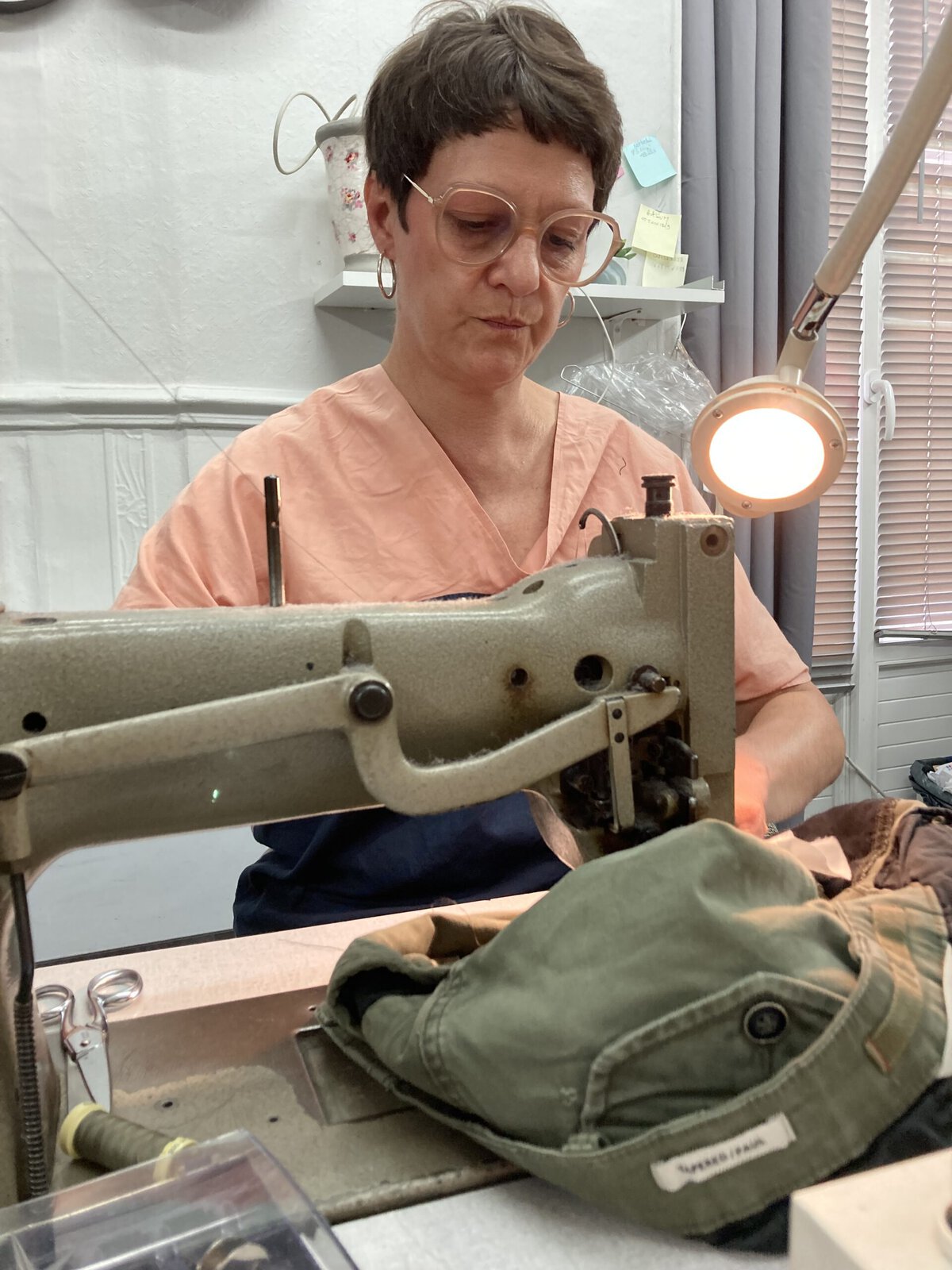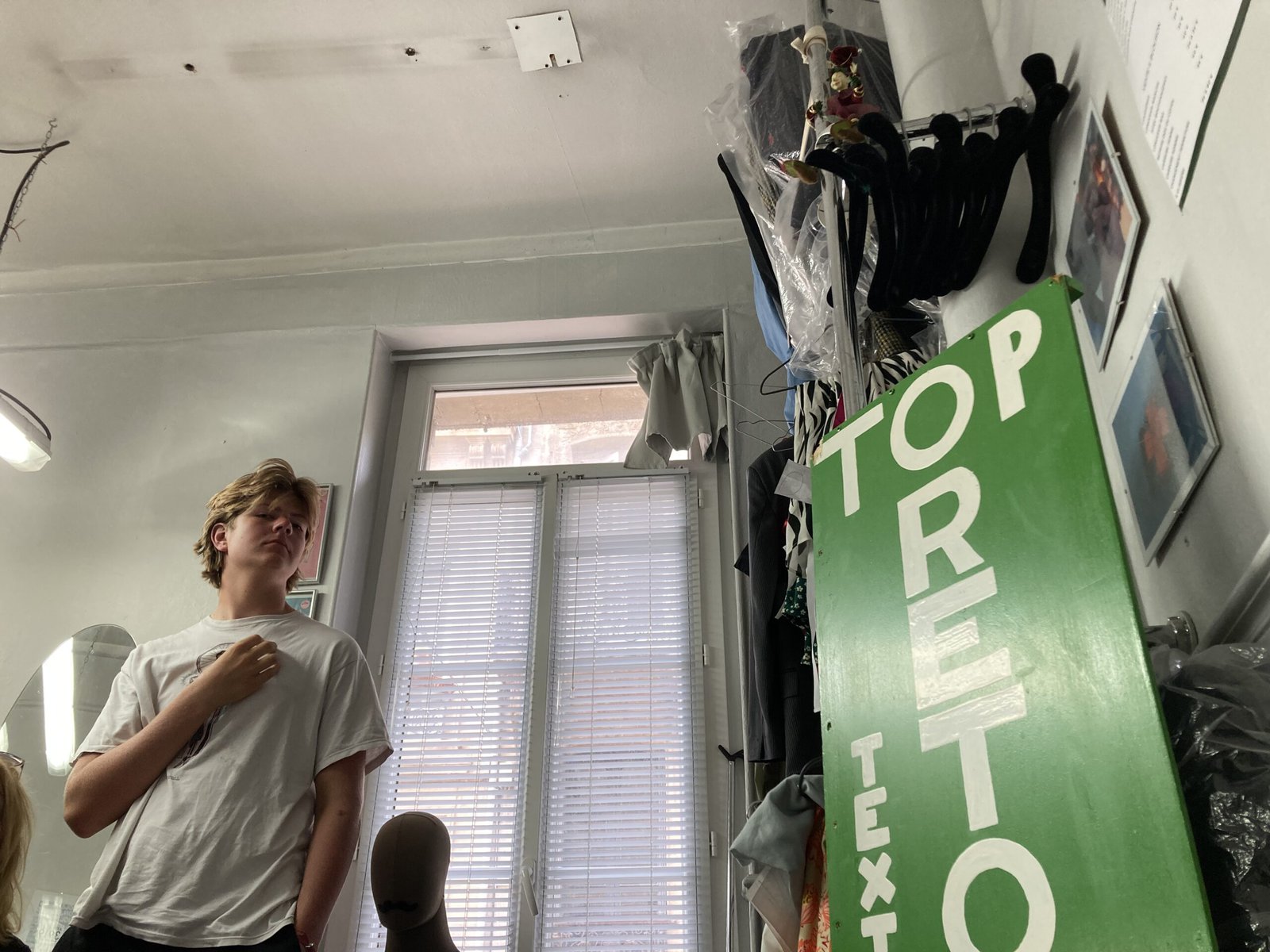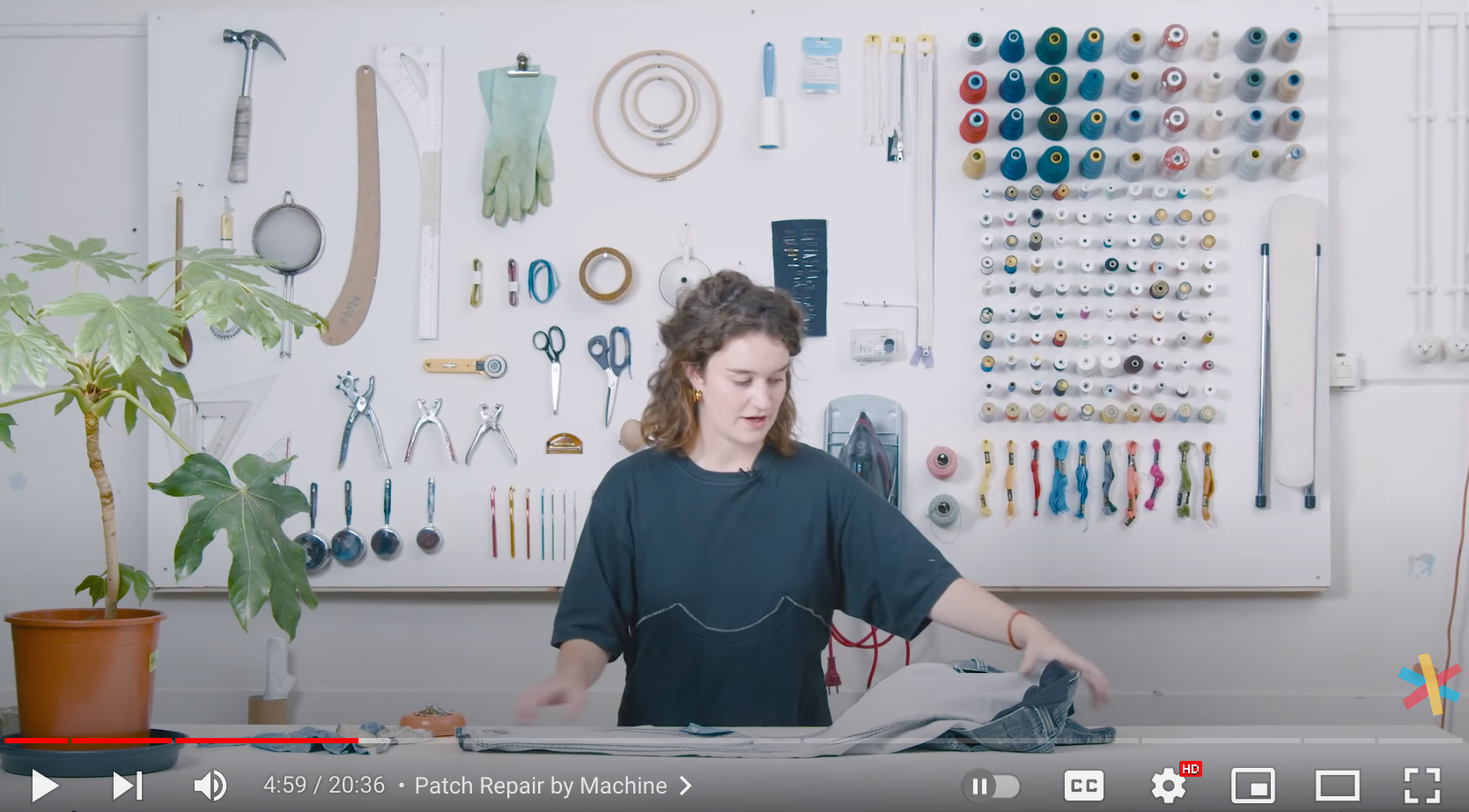In downtown Bordeaux, the big fashion brands of the world dominate the district around Rue Sainte-Catherine, nearly upstaging the St. Andre Cathedral and the famous Grand Theatre de Bordeaux. Their LED signs blaze from behind magnificent neoclassical facades: H&M, Old Navy, G-Star RAW — a modern cultural form embedded within the old.
Mireille Paumier’s studio for repairs is located on a far less ostentatious side street. Top Retouches is written on a green sign at the entrance. A steep staircase leads up to the first floor, where the 56-year-old sits at her sewing machine under a bright neon lamp and sews a zipper into a pair of trousers. A customer waits at a small counter, leafing through a magazine. Mireille Paumier repairs many things. She replaces buttons and jacket linings, renews broken seams, changes waistbands and skirt waists, plugs holes or patches them with a piece of fabric. “People often stop wearing their clothes because some little thing is wrong or broken.” The seamstress, who works by appointment, looks up only briefly through her large glasses. “Because of my work, customers use their clothes longer.”

Now, Ms. Paumier’s work will be supported by the French government, which has set up a fund for clothing repairs financed by taxes on manufacturers and retailers in France’s fashion industry. Starting this month, anyone in France who has shoes resoled or clothing repaired will receive a subsidy. The repair bonus of between six and 25 euros is intended to encourage consumers to visit cobblers and tailors instead of throwing away old shoes and clothes. Some 154 million euros are available for the program until 2028.
In this way, the French government is responding to an ecological problem that is only gradually coming to the public’s attention. Ever shorter life cycles for clothing are consuming resources and growing mountains of waste. Hardly any other flow of goods has grown so dramatically in recent years, and with so little regulation, as the ballooning textile industry.
In the last 20 years, global production of textile fibers has almost doubled to 110 million tons per year, and could increase further to 145 million tons by 2030. The increase has been driven by plunges in both cost and quality — today, many clothes are purchased and worn only a few times, or even just once, before being discarded in favor of new items.
In France, for example, about 3.3 billion articles of clothing, shoes, bedding and table linens hit the market last year — around 500,000 more than in the previous year. In the same period, the French disposed of 700,000 tons of clothing. In the European Union, five million tons of clothes were thrown away, or 26 pounds per person. In the United States the situation is far worse. As much as 14.5 million tons of textiles are landfilled or incinerated in the US each year — over 88 pounds for every American.
The environmental consequences of this are catastrophic. According to estimates by the European Environment Agency, the fashion industry is responsible for ten percent of global greenhouse gas emissions. That is more than international air traffic and ocean shipping combined. EU citizens alone generate 121 million metric tons of greenhouse gasses each year through the clothes they buy.
Not only that: The production of shoes and clothing consumes large amounts of water, cotton, leather and wood, and requires the production of synthetic fibers and fertilizers, contributing to deforestation and pollution. All of which means that, for anyone even casually concerned about the environment, there are more than enough reasons to wear the contents of one’s closet for as long as possible. Mireille Paumier, with her atelier for repairs, and thousands of other small businesses can help. But most of them have a problem: fast-fashion’s economies of scale have made it cheaper to buy new clothes than to repair existing ones.

“Sewing in a new zipper costs more than a new jacket at H&M,” says Paumier, rattling her sewing machine. That’s where the French repair fund comes in. Starting this month, Paumier can give her customers a discount and get reimbursed by the nonprofit Refashion, which the government has contracted to manage the program. “This is a good thing,” she thinks, “as long as it’s not handled too bureaucratically.”
Too much bureaucracy is exactly what Refashion wants to avoid. The process should be simple once a repair business has registered, say advocates, and consumers should be able to find the businesses on Refashion’s website. In addition to organizing the repair fund, Refashion’s tasks include raising public awareness about reuse and recycling. The agency supports actors in the textile sector, from fashion designers to used-clothing collection companies, in the implementation of eco-design guidelines, the prevention of waste, and the collection and recycling of worn-out textiles.
Crushed by negative news?
Sign up for the Reasons to be Cheerful newsletter.Currently, about 16 million pieces of textiles are repaired per year in France, according to a study by the state-run Agence de Transition Ecologique. “We want to increase that by 35 percent by 2028,” says Jennifer Cuenca of Refashion.
In doing so, France would burnish its already impressive anti-waste track record. Since 2016, the country has required supermarkets of a minimum size to give their unsold goods to soup kitchens, food banks or similar organizations. Thanks to the law, these places now have significantly more donated food on hand. Since 2021, manufacturers in France have also been obliged to build appliances in a repair-friendly way and to supply spare parts. And last year, the government started offering French consumers financial support for the repair of electrical appliances, a model being copied in other European countries. In Austria and some German states, for example, consumers can now apply for a bonus for the repair of their own appliances.

While there are many regulations in Europe requiring manufacturers to dispose of clothes more sustainably, “What’s special about France is that the regulations there also focus primarily on longer use and the avoidance of waste,” says Clara Löw, researcher for sustainable products and material flows at the renowned Oeko-Institut in Freiburg, Germany. “A repair bonus, however, can only be a part of the solution,” Löw continues. Thus, guidelines would also have to prescribe improved design. What use is a bonus of 25 euros for the repair of a jacket if the lining or zipper cannot be replaced?
This is precisely what is now to happen in the EU’s new eco-design guidelines, which have so far only regulated the energy efficiency of appliances. The first thing the European institutions want to regulate is the design of textiles. The European Commission is now planning a continent-wide repair index based on the French model.
But consumers must also play their part. Pants or a skirt repaired with the help of a bonus will only reduce waste if their owners also cut back on shopping for new garments, says Mireille Paumier.
“The repair fund can only be part of the solution,” she says, placing the pants with the new zipper on the counter. “Above all, the fundamental problems of the textile industry must be solved, such as exploitative wages, extremely polluting production and poor quality.” She seems satisfied nonetheless. After all, she has just saved a pair of pants. And made a customer happy.









